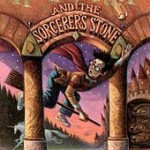The Italics vs. Quotes Debate
 We (Edith Hope Fine and Judith Josephson) are the Grammar Patrol. Both of us taught for years and are now writers, with thirty plus books between us, including our two popular grammar guides, Nitty-Gritty Grammar and More Nitty-Gritty Grammar. For close to twenty years, we taught writing and grammar basics and now we blog about grammar for writers.
We (Edith Hope Fine and Judith Josephson) are the Grammar Patrol. Both of us taught for years and are now writers, with thirty plus books between us, including our two popular grammar guides, Nitty-Gritty Grammar and More Nitty-Gritty Grammar. For close to twenty years, we taught writing and grammar basics and now we blog about grammar for writers.
 Thanks to computers, we can now italicize with a keystroke. But that doesn’t solve this dilemma: When to italicize words and when to use quotation marks?
Thanks to computers, we can now italicize with a keystroke. But that doesn’t solve this dilemma: When to italicize words and when to use quotation marks?
Is it “Harry Potter” or Harry Potter? “Sixty Minutes”or Sixty Minutes? “Madame Butterfly” or Madame Butterfly?
 Let’s face it. Sometimes you just have to memorize the rules. If memorization isn’t your forte (and yes, we still say “fort,” but dink around on the Internet: the two-syllable “for-tay” is on the rise and no longer considered incorrect), we suggest consulting your favorite grammar book. Might we suggest our Nitty-Gritty Grammar or More Nitty-Gritty Grammar. (True confession: We both keep these grammar guides handy, especially for rules surrounding today’s topic.)
Let’s face it. Sometimes you just have to memorize the rules. If memorization isn’t your forte (and yes, we still say “fort,” but dink around on the Internet: the two-syllable “for-tay” is on the rise and no longer considered incorrect), we suggest consulting your favorite grammar book. Might we suggest our Nitty-Gritty Grammar or More Nitty-Gritty Grammar. (True confession: We both keep these grammar guides handy, especially for rules surrounding today’s topic.)
One friend, now a retired middle school English teacher, used this trick to help her students. She told them to think about this in terms of big pieces or little pieces. Big = italics. Small = quotation marks.
Check out these specifics:
Italics
First, some of the easier-to-remember uses of italics. Use italics:
• for scientific names: Tyrannosaurus rex
• for emphasis: “The will, as only Maxwell knew, made him the sole heir to their parents’ fortune.”
• for screen play directions, to show how a character should speak a line: Kermit (innocently): “It’s not that easy being green”
• for words from other languages: bon ami, piéce de la resistance, c’est magnifique, mea culpa, c’est fini, feng shui, E pluribus unum, Hasta mañana, baby!
Tip: Some foreign words (shish kebab, en masse, cafe latte, and maven) have been used so often that they are no longer italicized.
More Italics Tips
Titles
Titles are trickier. Use italics when writing these titles:
Magazines: Vanity Fair
Journals: The California Reader
Newspapers: The New York Times
Books: Cutting for Stone (Abraham Verghese)
Long poems: Evangeline (Henry Wadsworth Longfellow)
Movies: The Help (Kathryn Stockett)
Plays: Two Pianos, Four Hands (Ted Dykstra and Richard Greenblatt)
Radio shows/Series Downton Abbey
TV shows/series : The Big Bang Theory
Cartoon strips: Zits (Jef Mallet)
Cartoon shows: Cyberchase
Musical works: 1812 Overture (Tchaikovsky)
Artistic works: Mona Lisa (Leonardo da Vinci)
CDs and DVDs: Red (Taylor Swift)
Names of ships: Grand Princess, Air Force One
Spacecraft: Curiosity
QUOTATION MARKS
Quotation marks (“ ”) aren’t just for enclosing spoken words (more on that in a future column). Use quotation marks for titles such as these, and don’t let the combination of quotation marks and italics throw you:
Short poems: “On the Pulse of Morning” (Maya Angelou)
Songs: “Bring Him Home” (Les Miserables)
Stories: “Three Billy Goats Gruff”
Short stories: “Teaching Luther to Cook”
(Mama Makes Up Her Mind, Bailey White)
Articles: “FDA Probing Energy Drink Deaths”
(Los Angeles Times)
Chapters of books: “The House of Fear”
(Kidnapped, Robert Louis Stevenson)
Short musical compositions: “Adagio for Strings” (Samuel Barber)
Individual radio/TV show episodes: “The Portwen Effect” (Doc Martin)
• To set off individual words or phrases.
George Herman “Babe” Ruth was the Sultan of Swat.
Tip: Ruth’s nickname is in quotes, but his title as Sultan of Swat is capitalized and not in quotation marks.
• To enclose direct quotations and dialogue.
Lewis Carroll’s “Jabberwocky” begins “Twas brillig and the slithy toves / Did gyre and gimble in the wabe . . .”
There you have it. We hope we’ve refreshed some of the rules on this sometimes confusing topic. We’d love to know if you have a cool mnemonic for remembering all of this. Send it and we’ll share . . .
For more on quotation marks, watch for a future column on the “Inside-Outside Rules.”
À bientôt from the Grammar Patrol!
Please Share
There you have it. We hope we’ve refreshed some of the rules on this sometimes confusing topic. We’d love to know if you have a cool mnemonic for remembering all of this. Just post below.
Tags: Grammar Patrol, italics, punctuation, quotation marks, quotes
February 12th, 2013 at 9:34 pm
And quotation marks to indicate irony. Yes?
February 13th, 2013 at 8:00 am
Hooray and thank you! Learned a lot, once again. Nitty Gritty sits happily beside Elements of Style on our shelf. Yikes this will not let me italicize. Please forgive.
February 14th, 2013 at 9:42 am
Thanks to you, Becky. You’ve made the Grammar Patrol happy!
February 15th, 2013 at 1:57 pm
Karen, we agree about the use of quotation marks with irony: The “jumbo” drink would fill a tea cup.
February 18th, 2013 at 9:05 am
Becky, you highlighted my concern in the digital age. Too many technologies won’t even let us italicize. When reading this article I immediately thought of my iPhone texting conversations where I end up putting TV shows in quotes (my other apparent option is all caps, which ends up looking like I’m yelling) to draw attention to the titles. Just capitalizing the first letters doesn’t always stand out enough and can cause confusion.
How do you all deal with the inability to italicize? I sure hope iPhones, etc., will incorporate formatting eventually!
November 6th, 2015 at 8:59 am
Hi
Would you use italics for a “bang” that is a gunshot, I am using an exclamation mark but on Georgia font it looks really weird with italics.